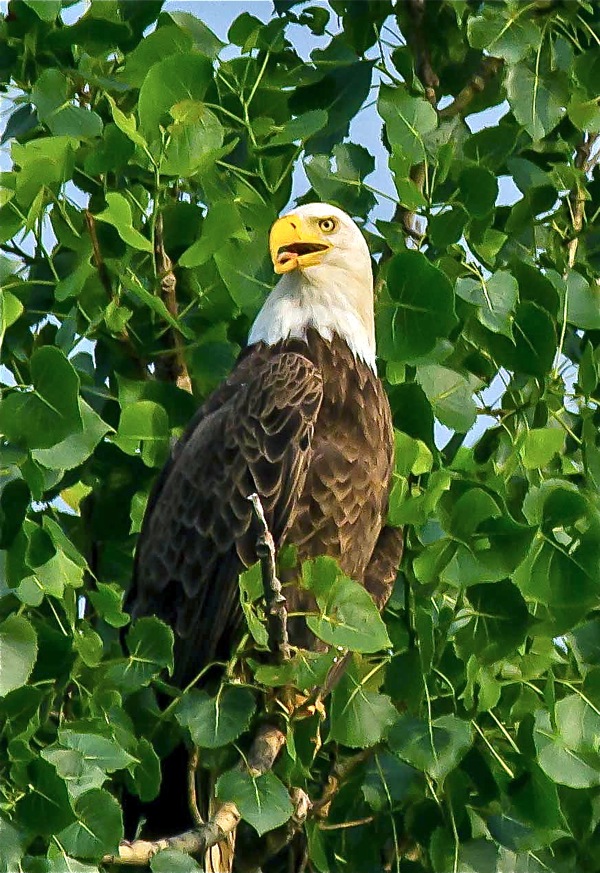Thanks to the collaborative efforts of divisions of wildlife, zoos, rehab centers and concerned landowners, the Bald Eagle has been removed from the endangered species list, and Ohio now has one of the Midwest’s most thriving populations.
(Ed. Note: Guest writer Dan Hickey served as game protector for Mercer and Miami Counties, then as a wildlife officer supervisor for nine counties in west central Ohio until he retired in 2005. Still avidly involved with the outdoors, wildlife and habitat conservation, we welcome his expertise and thoughts on our natural environment to Press Pros.)
By Dan Hickey for Press Pros
Although bald eagle sightings in the Buckeye State are more common today, eagles were once an endangered species. It’s hard to believe, but in 1979 there were only four bald eagle nests in Ohio. But thanks to partnerships between the Ohio Division of Wildlife, Ohio zoos, rehabilitation facilities and concerned landowners, bald eagle numbers began to climb.
Bald eagles were removed from the federal list of threatened and endangered species in 2007 and from the Ohio listing in 2012. During the 2018 nesting season Division of Wildlife biologists estimate that there were 286 eagle nests in the state, with mature eagles raising approximately 445 young eaglets. Expectations for 2019 are that perhaps the state may have 300 nests.
You may have seen them near you. Bald eagles typically nest in large trees, usually near large bodies of water with an ample supply of fish. But its not uncommon to see them have a road kill animal if the opportunity arises .

“
In the southern part of the state , eagles usually nest near major rivers , however bald eagles can be found in nearly every county, including urban settings. One famous pair resides just over 2 miles west of downtown Columbus along the Scioto River.
Although they are no longer endangered, they are still protected under the federal eagle and protection act. Adults are generally year-round residents, while immature birds will migrate during the spring and fall .
This past October I observed a immature bald eagle flying over my farm in Miami county. I had hunted waterfowl on my wetland earlier in the morning and left my duck decoys in the water with the intent of returning that afternoon. The young eagle made three attempts to capture one of my decoys, mistaking it for a live duck, and on the final attempt he successfully carried the decoy from the water to the shore and tried to eat it. Apparently he did not favor a plastic meal and flew on southward.
Life is a learning curve, and young bald eagles are no exception.

Coverage of the great outdoors on Press Pros is proudly sponsored by Olde English Outfitters, in Tipp City.

Wildlife photographer and outdoor enthusiast Leon Mertz of Minster Ohio, captured this photo of a mature bald eagle at lake loramie in Shelby county. The area is host of two bald eagle nests. (Photo Provided)
